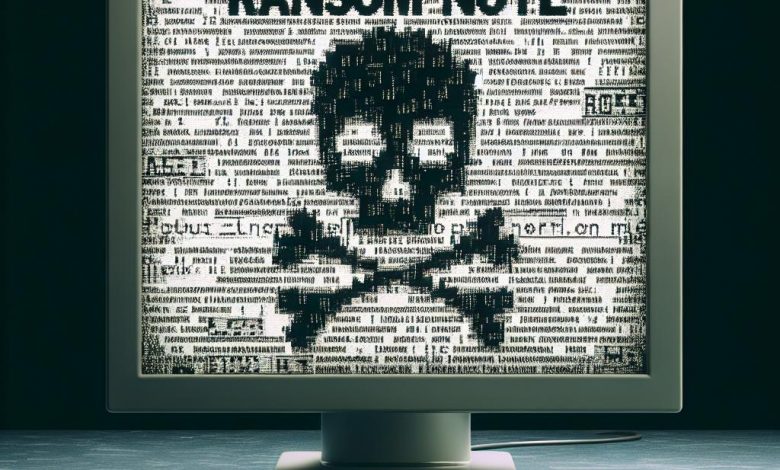
Table of Contents
Introduction to Petya Ransomware
The cyber world faced a significant threat with the emergence of Petya ransomware, a malicious software designed to encrypt data on victims' computers and hold it for ransom. Distinctive in its method of attack, Petya doesn't just lock files but targets the very core of the Windows operating system on infected computers.
Distributed through malicious e-mails with Dropbox links
Petya ransomware primarily propagates through deceptive email campaigns. Cybercriminals specifically send these emails to Human Resources departments within companies, presenting them as job applications. The emails often include attachments that seem harmless, like PDF files. However, these attachments contain malicious Dropbox links or are executables masquerading as legitimate documents. Upon clicking the link or opening the document, the ransomware is deployed onto the unsuspecting victim's system.
Targets HR departments of German companies
The attackers behind Petya ransomware have devised their strategy around targeting HR departments, particularly within German companies. These departments are routinely processing job applications, making them ideal targets for the disguised emails that slip through security measures under the guise of potential candidate submissions. This focused approach significantly aids the ransomware's dissemination, as HR personnel are more likely to open and run the attachments believing them to be genuine applications.
Encrypts portions of hard drives
Unlike typical file-encrypting ransomware, Petya ransomware is known for its aggressive approach to encryption. It encrypts portions of the hard drive itself, rendering the data inaccessible. Upon successful infection, it targets the master file table (MFT) of the NTFS file system, prompting the system to crash and forcing a reboot where Petya's true malicious intent is revealed.
Prevents booting the operating system by replacing the Master Boot Record (MBR)
Petya's standout feature is its ability to prevent an infected computer from booting up by overwriting the Master Boot Record (MBR). The MBR is a crucial area on the hard drive that contains information about how and where the operating system is located and initiated. By corrupting the MBR, Petya effectively leaves the victim with a machine that cannot start the OS normally, instead displaying a ransom note upon startup. Victims are then instructed to pay a ransom, often in Bitcoin, to receive a decryption key, purportedly to restore access to their files and operating system.
Infection and Encryption Process
Petya ransomware's infection process begins with a stealthy installation onto the victim's system. It is meticulously designed to evade detection and deliver its payload effectively. Upon execution, it first seeks to compromise the system's Master Boot Record (MBR), a critical component required for the normal booting process of a computer. By writing its malicious code into the MBR, Petya gains the ability to take control before the operating system itself loads during a restart.
During the encryption phase, Petya employs a deceptive tactic to mask its destructive activities. It triggers a system reboot and displays what appears to be a legitimate CHKDSK screen—a utility typically used for checking the integrity of disks. However, this is a simulated screen and, in reality, the ransomware is busily encrypting the Master File Table (MFT) in the background. The MFT is imperative to the filesystem, as it holds the index to every file on the hard drive; without it, the operating system is unable to locate or manage files, rendering them unattainable.
The crafty design of Petya does not stop at encrypting the MFT; it delivers a final blow to the victim's access to their computer by displaying a skull image on the screen, signifying the system's lockdown and the successful deployment of the ransomware. This ominous imagery is typically followed by a ransom demand screen, which instructs the victim to make a payment, typically in Bitcoin, for the supposed decryption key to regain access to their files and operating system. The demand lock screen further reinforces the direness of the situation, emphasizing that failure to comply would result in permanent data loss.
Ransom Payment and Decryption Challenges
When Petya ransomware successfully encrypts a system, it provides victims with a daunting ultimatum: make a ransom payment or lose access to their encrypted files forever. The demanded ransom has varied, but it often revolves around the value of approximately 1 Bitcoin — a significant amount of money, particularly during instances when the cryptocurrency's value surges.
The payment process directed by Petya is intentionally obscured through the use of the Tor browser. Victims are instructed to navigate the anonymous network to make their payment, providing them with a layer of anonymity, which is ironically mirrored in the attackers' approach. However, this also adds a layer of complexity for victims who are not familiar with such browsers or the process of acquiring and using Bitcoin. Moreover, following these instructions does not guarantee the recovery of the encrypted data, as the attackers might not provide the decryption key as promised.
Further complicating the process, various Petya attacks have demonstrated an amateurish setup with their payment system, such as utilizing a singular Bitcoin address for all victims or a single point of contact email address which was promptly shut down by the service provider. This unsophisticated approach suggests that either the attackers did not expect such a wide impact, or their primary intention was disruption rather than financial gain.
In the initial waves of the Petya attacks, there were no known tools that could decrypt the Master Boot Record (MBR) without the key. The sophisticated nature of the ransomware's encryption left victims with limited options, most of which relied on preemptive measures, such as having recent data backups or the ability to restore the MBR without decrypting it. The situation highlighted the importance of proactive cybersecurity and the dangers of depending on reactive measures after an attack.
Updates and Developments
In a turn of events that provided a ray of hope for those affected by Petya ransomware, cybersecurity community members have contributed to the creation of tools that can decrypt locked systems without paying the ransom. One significant development was the release of the master key by Malwarebytes, which led to the creation of several decryption tools. These tools use the master key to unlock the encryption placed by the ransomware, giving victims an alternative to restoring their files.
In a collaborative effort, researchers leostone and Fabian Wosar developed a decryption tool that is available for free. This innovative solution allows users to retrieve the necessary data from the encrypted hard drive to generate the decryption key. The tool is designed to be user-friendly and has proven to be a lifeline for those affected, especially in cases where paying the ransom was not an option or did not result in data recovery.
As the cyber threat landscape constantly evolves, so does ransomware like Petya. It has been observed that newer versions of Petya come with updated color schemes on the ransom note screens, possibly to differentiate between versions or to simply make the demand more noticeable to victims. Moreover, a secondary piece of ransomware named "Mischa" has been developed to accompany Petya. This double-barreled approach means that if Petya fails to encrypt the MBR due to lack of privileges, Mischa will take over and begin encrypting individual files. This adaptation indicates an increased sophistication in attack strategies, ensuring that one way or another, the ransomware can inflict damage and attempt to extract payment from its victims.




